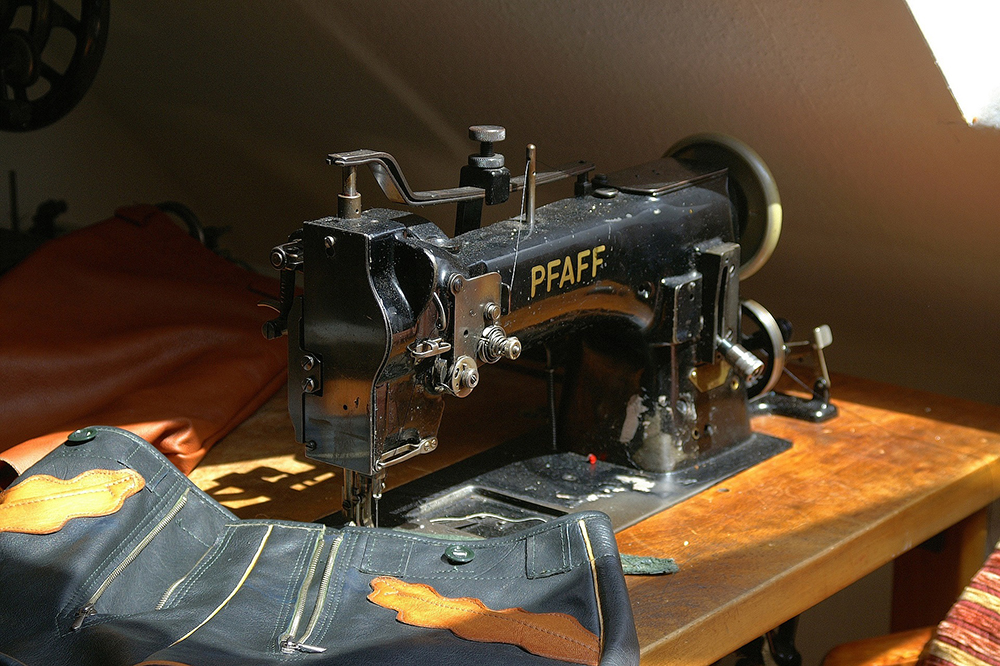- Oh dear, said the old lady. What a pity! But perhaps you’d like a new hat?
However this idea only filled Snufkin with alarm, and he pulled his old green hat down farther down over his ears and said:
- Thank you, but I was just thinking how dangerous it is to load yourself up with belongings."
Tove Jansson, Comet in Moominland (Kometen kommer)*
Blogg post written by Ann Grubbström, Lars Hallgren and Emily Montgomerie.
Snufkin’s (one of Tove Jansson’s famous Moomin characters) fear of acquiring too many belongings may be more justified in today’s society than ever before. Overconsumption is often portrayed as the biggest culprit in the climate crisis. In an attempt to make us consume less, environmental organisations and Swedish municipalities launch campaigns that explain to and persuade consumers not to buy certain things, what to buy instead, and how to take better care of what they already own. The campaigns aim to teach, appeal to and inspire consumers to take responsibility and change their daily habits and lifestyles: To be sustainable.
But communication officers and other environmental communicators who work with changing consumption patterns are facing a difficult task: To suggest that less is really more, in a society that clearly says more is more, and more is good. In this blog post, we want to highlight how communication officers and others work reflexively and actively with consumer identities as a tool for sustainable transformation. In a number of focus group discussions, 46 communications officers and environmental strategists have shared their valuable experience of trying to change society with us.
Much of today’s society is built on consumption, not least our ways of expressing who we are and which group(s) we belong to. To be somebody is, to some extent, to be the one who visits certain stores, who knows about and can distinguish between products that an “outsider” can hardly differentiate. Late modern society is largely dependent on and structured by consumption. In this landscape, who is the sustainable consumer, and what identity is offered to the one who takes responsibility? Do we need to refrain from the material identity markers that make us feel happy, safe and at home with ourselves?
The professional environmental communicators with whom we have spoken do not think so. They maintain that environmental communication that simply asks us to refrain from consumption must fail. In contrast, they claim that offering “sustainable” as an identity marker is the key to a successful communication strategy.
The communication officers know that communication around changes in consumption behaviour is difficult. It can be provoking to hear that we are facing a huge challenge, that our consumption habits are wrong, and that we need to make sacrifices. It might be easiest to dismiss such a message. On the other hand, an oversimplified message and cheerful tone could also be misleading and may not lead to any actual change. Sustainability can be perceived as a dull and even impossible ideal. Some campaign makers work against this and attempt to define the sustainable consumer by what they are, rather than by what they are not. In this blog post, we describe some of the identities that campaign makers offer to the sustainable consumer.
The moral consumer
In some sustainability campaigns, the sustainable consumer is described as someone who is morally good and takes responsibility. The way that we consume (how often, what and where we buy things) is an opportunity to highlight the moral values that we see as important. We buy more than a product, we also buy a value when we choose organic or certified products, for example. We can show our societal engagement and our will to act responsibly through our way of consuming. The campaigns can offer us this identity by highlighting and rewarding alternative products and behaviours that are associated with a sustainable and “responsible” lifestyle. These campaigns often contain, in one way or another, information about the negative impact consumption has on the environment and the resources we save by choosing the alternative product or behaviour.
Solidarity and the sustainable consumer
One identity construction that is close to the moral consumer is the image of the sustainable consumer as someone who contributes to and is part of society. Campaigns with messages such as “no one can do it all, but everyone can do something” and “sustainable together” highlight the social element of the sustainable consumer as someone who acts for the greater good, in the face of a common challenge. In addition to the moral aspect of this, the consumer is offered a community belonging. We can join the community of those who – together! – make a difference, mitigating climate change and other environmental issues. These campaigns invite us to social activities such as bicycle bingo, or picking up trash together, and to share our best sustainability hacks on social media.
It’s hip to be sustainable
For some of us – maybe most of us - the stuff we consume, such as clothes, electronic devices, bikes, cars, or holiday trips, is a way to show who we are, and keeping up with trends and the latest fashion is an important part of maintaining our identity. Can we become sustainable consumers without sacrificing this essential part of our identity? Maybe – at any rate, some campaigns are based on exactly that idea. You can be both sustainable and fashionable, these campaigns say. Lately, we have seen fashion shows and magazines displaying second hand clothes, for example. Influencers speak passionately about the advantages of borrowing or exchanging clothes, about how to combine old clothes in new, “cool” ways. They offer a strong identity to their followers: the sustainable fashionista. We can, they say, be sustainable and still be trendy and keep the fashion interest as part of our personality and identity.
To combine existing interest with sustainability identities
Sustainable fashion campaigns are an example of what many environmental campaign makers ask themselves: how can we combine people’s existing interests with an interest in sustainability? Sustainable transformation events packed with information and lectures speak only to a relatively small group. There may be better opportunities to create change if initiatives and campaigns that encourage us to consume less take place where people already meet in their everyday life, at football or choir practice. When we speak to people in these arenas, it may be easier to see what can be changed in our everyday habits, and that these changes can happen without us having to give up on activities that are important to us. Keep doing what you’re doing, but in a more sustainable way. Another way is to let the ecological sustainability be something that just comes as an added benefit in campaigns where the focus is on other advantages of a lifestyle change, such as improved health or personal economy. In many campaigns that promote cycling instead of going by car, the emphasis is mainly on the health aspect, or safer school routes (due to less traffic), while the benefits regarding climate change are mentioned as a positive side effect.
The making of: The sustainable consumer
Environmental campaign makers have discovered that their task is not to encourage the fashionista to become interested in something other than fashion, but to offer those with an interest in fashion an identity as an “elite fashion-lover”: One who does not simply buy from the standard assortment, but one who mends, remakes, adapts and prolongs the life of their clothes, thereby mitigating climate effects. Instead of asking us to refrain from our interests, these campaign makers encourage us to develop and advance our interests, and the associated identity, in a sustainable way. They show us that it is possible to be sustainable consumers who make an impression, and to recognize ourselves in this updated identity. Snufkin demonstrates this in the initial quote. He is someone who values freedom, simplicity, and the comfort of well-worn clothes, and refraining from buying new pants does not mean refraining from being someone: it is an expression of being himself.
*English translation by Elizabeth Portch, copyright Ernest Benn Ltd 1951

